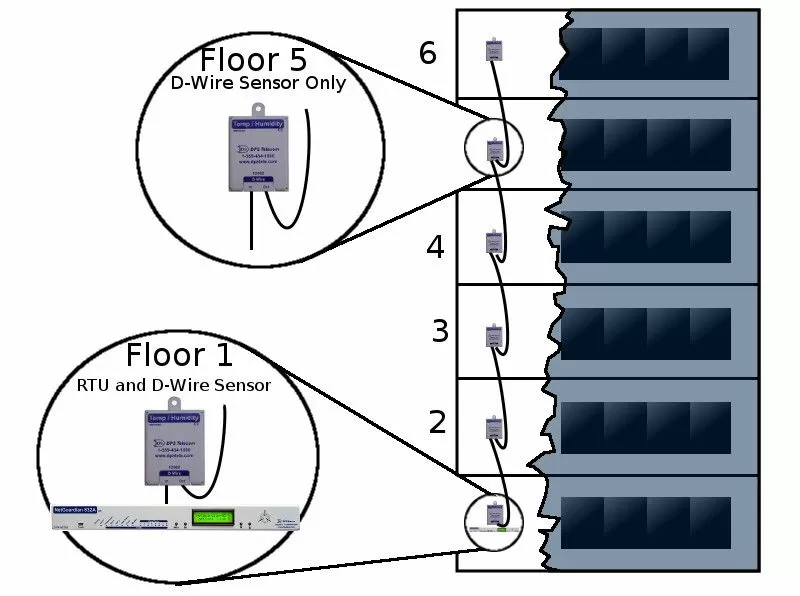Download our free Monitoring Fundamentals Tutorial.
An introduction to Monitoring Fundamentals strictly from the perspective of telecom network alarm management.
1-800-693-0351
Have a specific question? Ask our team of expert engineers and get a specific answer!
Sign up for the next DPS Factory Training!

Whether you're new to our equipment or you've used it for years, DPS factory training is the best way to get more from your monitoring.
Reserve Your Seat TodayDo you have several server closets in the same building? They might be on different floors or spread out on the same floor. They all need temperature, humidity, and equipment monitoring, but it seems like a waste to put a full RTU in each one. These rooms aren't miles apart, after all.
So what can you do?
There has to be a better way. Imagine if you had a system that only required one RTU and sensors with "Plug 'n' Play" functionality. You could connect multiple sensors to a single RTU and cover your entire facility. You could then remotely monitor your whole building with only a few key pieces of equipment.
DPS Telecom's line of D-Wire sensors can easily daisy-chain together to make monitoring your facility easy, giving you complete visibility of every floor. D-Wire sensors are a way to monitor environmentals in your equipment rooms using daisy-chained sensors. With D-Wire sensors, you don't have to worry about analog capacity on your RTUs, tangled masses of sensors at your RTU, or even the trouble of wiring analog connectors.

D-Wire sensors from DPS use simple RJ-11 connectors, in and out, and allow you to chain up to 16 sensors to a single DPS RTU's D-Wire port. Your sensor chain can be a maximum of 600 feet, so you can run sensors out as far as you need to monitor your equipment, without having to place analog-capable RTUs in multiple places.
Sensors from DPS include:
To receive a price quote or ROI analysis...
Call 1-800-693-0351